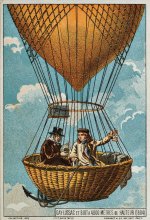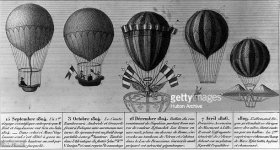Well, considering that recently I've had quite some time of blog inactivity on my hands, I had a chance to ponder on a few things. Below is one of those. It pertains to whether such a thing as Napoleonic invasion of Russia could have taken place in accordance with the narrative. Logistics are in question here.

1812 French invasion of RussiaSome Wiki facts follow below:

Now, this here above would be my weakest point, for I truly do not know how much time and effort it would take 685,000 soldiers, multiple cannons and 200,000 horses to cross this river. If you have any idea - please share.
Horses:

Assuming that Napoleon's horses were moving and hauling stuff, they needed way more food than an average non working horse would need. Let us consider the minimum of 20 lbs per day.
200,000 horses would need approximately 4,000,000 lbs of hay per day. Obviously sporadically this could be supplemented with grass, but according to one of my co-workers who has a horse, just grass would not cut it.
Soldiers:

Essentially, to supply the French Army with food for the soldiers only, the following number of semi truck deliveries would be needed:
Well, above we only have food supply related requirements. If we factor in military supplies, such as bullets, cannon balls, additional weapons, clothing, etc, we will most likely end up with considerably more logistical requirements.
The above carriage numbers do not include any horse food, and horse maintenance related requirements
I know, the above is dry and boring, but I simply do not understand how the army of this size could be properly supplied to maintain its fighting readiness. I spent quite a few years in the military service, and know that any type of war-fighting becomes secondary when you have nothing to eat.
Any opinions on how Mr. Napoleon could pull this off?
P.S. There are many additional issues, like the quality of their uniforms with gilded epaulettes, roads, and the lengths of this marching column. It almost sounds like the front of the marching column had to be crossing into Russia simultaneously with the rear of the same column leaving France.
1812 French invasion of Russia
- The French invasion of Russia, known in Russia as the Patriotic War of 1812 began on 24 June 1812 when Napoleon's Grande Armée crossed the Neman River in an attempt to engage and defeat the Russian army. Napoleon hoped to compel Emperor of All Russia Alexander I to cease trading with British merchants through proxies in an effort to pressure the United Kingdom to sue for peace.
- c. 685,000 soldiers
- 180,000-200,000 horses
- Paris to Moscow: 1,762 miles
- Eastern France to Western Russia: approximately 1,000 miles (as crow flies)
- Neman River to Russian western border: approximately 200 miles
- Remarkable is the fact that the Great Army had to march for approximately 1,000 miles before even making it to the Russian border.
Crossing the Neman River
The Neman is a major Eastern European river. It rises in Belarus and flows through Lithuania before draining into the Curonian Lagoon, and then into the Baltic Sea at Rusnė Island. It begins at the confluence of two smaller tributaries, about 15 kilometers (9 mi) southwest of the town of Uzda in central Belarus, and about 55 km (34 mi) southwest of Minsk. In its lower reaches it forms the border between Lithuania and Russia's Kaliningrad Oblast. It also, very briefly, forms part of the Belarus–Lithuania border. The largest river in Lithuania, and the third-largest in Belarus, the Neman is navigable for most of its 900 km (560 mi) length.
Food
Personally, I find the food supply to be the most intriguing part of the entire French invasion. To help out with how much food would be required to support the army of this size for the prolonged duration of time I turned to Google, and here is what I got:Horses:
- Just how much your horse needs will depend on its weight. According to the Ontario Ministry of Agriculture, a full-grown horse should eat about 15 to 20 pounds (6.8 kg to 9.1 kg) of hay a day. That is 1.5 percent to 3 percent of its body weight if it weighs about 1,000 pounds (450 kg). This is a very rough average and horses will require more or less depending on their metabolism, workload, the time of year, and what else they may be eating.
Assuming that Napoleon's horses were moving and hauling stuff, they needed way more food than an average non working horse would need. Let us consider the minimum of 20 lbs per day.
200,000 horses would need approximately 4,000,000 lbs of hay per day. Obviously sporadically this could be supplemented with grass, but according to one of my co-workers who has a horse, just grass would not cut it.
Soldiers:
- People generally eat between three to four pounds of food each day.
- 685,000 soldiers would need 2,740,000 lbs of food.
- Though one of the greatest military generals of all time, Napoleon was surprisingly negligent about feeding his army. His orders for the Grande Armée's rations were ample enough: "Soup, boiled beef, a roasted joint and some vegetables; no dessert." But bad roads and poor weather often prevented supply wagons from reaching campsites in time.
Supply Wagons

Well, I do not know about the lifting capacity of the above wagons delivering food from France to Russia, but today our opinion is as follows:
- The horses weigh between 1650 and 1750 pounds apiece. A draft horse can pull a dead weight along the ground (draft) equal to 1/10 their body weight for 8 hours a day. For short distances, they can pull ten to fifteen times as much. The fully loaded wagon will only draft at 300 - 400 pounds on flat ground.
Average Semi Truck
Most semi-trucks in the U.S. haul around 40 tons (80,000 pounds).
- 1 day: 34 semi trucks - 2,740,000 lbs of food
- 1 week: 240 semi trucks - 19,200,000 lbs of food
- 1 month: 1,027 semi trucks - 82,160,000 lbs of food
- 1 day: 2,740 supply carriages
- 1 week: 19,200 supply carriages
- 1 month: 82,160 supply carriages
Well, above we only have food supply related requirements. If we factor in military supplies, such as bullets, cannon balls, additional weapons, clothing, etc, we will most likely end up with considerably more logistical requirements.
The above carriage numbers do not include any horse food, and horse maintenance related requirements
I know, the above is dry and boring, but I simply do not understand how the army of this size could be properly supplied to maintain its fighting readiness. I spent quite a few years in the military service, and know that any type of war-fighting becomes secondary when you have nothing to eat.
Any opinions on how Mr. Napoleon could pull this off?
P.S. There are many additional issues, like the quality of their uniforms with gilded epaulettes, roads, and the lengths of this marching column. It almost sounds like the front of the marching column had to be crossing into Russia simultaneously with the rear of the same column leaving France.



